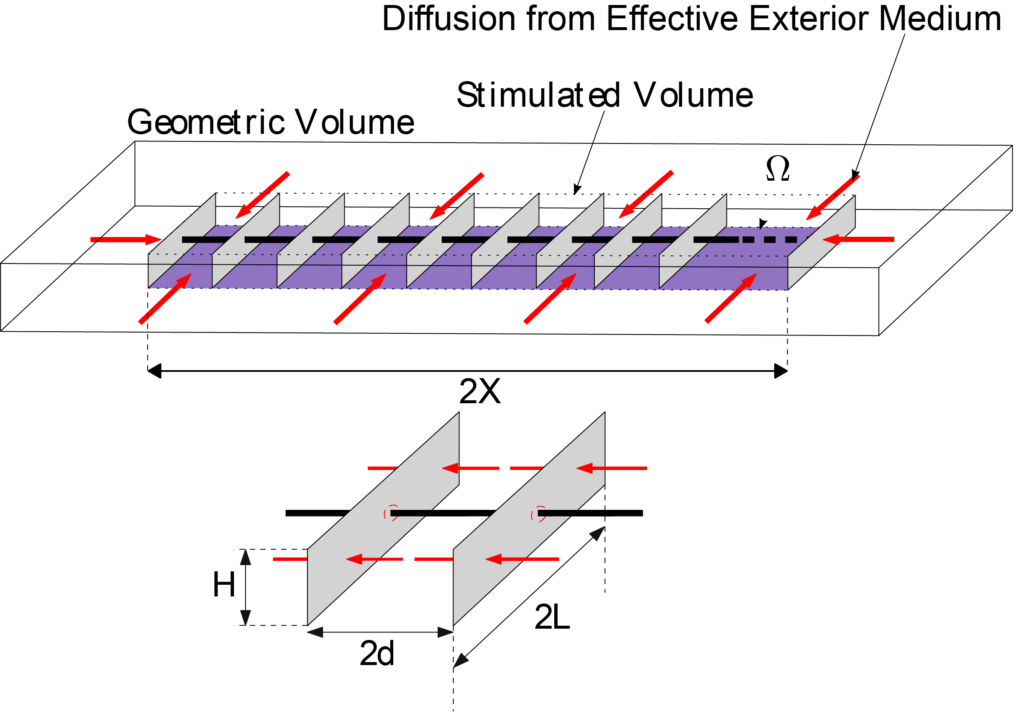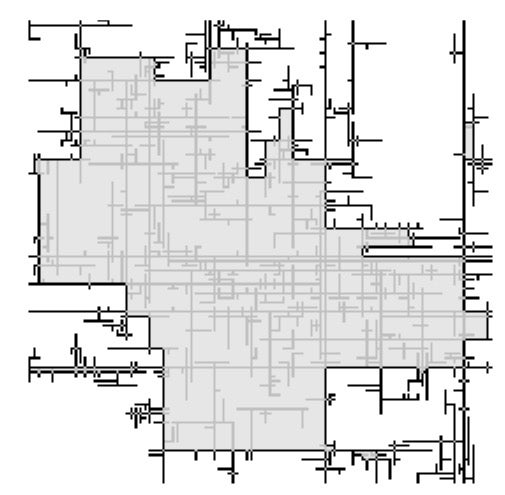[1]
F. Male, M. P. Marder, L. M. Ruiz-Maraggi, and L. W. Lake, “Bluebonnet: Scaling solutions for production analysis from unconventional oil and gas wells,”
Journal of Open Source Software, vol. 8, no. 88, p. 5255, Aug. 2023, doi:
10.21105/joss.05255.
[2]
L. Pharr, M. Marder, and T. Patzek, “A model of fracture-facilitated flow of hydrocarbons from petroleum source rock,”
Int J Fract, Dec. 2022, doi:
10.1007/s10704-022-00686-4.
[3]
M. Marder, B. Eftekhari, and T. W. Patzek, “Solvable model of gas production decline from hydrofractured networks,”
Phys. Rev. E, vol. 104, no. 6, p. 065001, Dec. 2021, doi:
10.1103/PhysRevE.104.065001.
[4]
T. W. Patzek, W. Saputra, W. Kirati, and M. Marder, “Generalized extreme value statistics, physical scaling, and forecasts of gas production in the Barnett shale,”
Energy & fuels, vol. 33, no. 12, pp. 12154–12169, 2019, doi:
10.1021/acs.energyfuels.9b01385.
[5]
M. Marder, B. Eftekhari, and T. W. Patzek, “Solvable model for dynamic mass transport in disordered geophysical media,”
Phys. Rev. Lett., vol. 120, no. 13, p. 138302, Mar. 2018, doi:
10.1103/PhysRevLett.120.138302.
[6]
B. Ghanbarian, C. Torres-Verdín, L. W. Lake, and M. Marder, “Gas permeability in unconventional tight sandstones: Scaling up from pore to core,”
Journal of Petroleum Science and Engineering, vol. 173, pp. 1163–1172, 2018, doi:
10.1016/j.petrol.2018.10.057.
[7]
B. Eftekhari, M. Marder, and T. W. Patzek, “Field data provide estimates of effective permeability, fracture spacing, well drainage area and incremental production in gas shales,”
Journal of Natural Gas Science and Engineering, vol. 56, pp. 141–151, 2018, doi:
10.1016/j.jngse.2018.05.027.
[8]
M. Marder, T. Patzek, and S. W. Tinker, “Physics, fracking, fuel, and the future,”
Physics Today, vol. 69, pp. 46–52, 2016, doi:
10.1063/PT.3.3236.
[9]
M. Marder, C.-H. Chen, and T. Patzek, “Simple models of the hydrofracture process,”
Phys. Rev. E, vol. 92, no. 6, p. 062408, 2015, doi:
10.1103/PhysRevE.92.062408.
[10]
F. Male, A. W. Islam, T. W. Patzek, S. Ikonnikova, J. Browning, and M. P. Marder, “Analysis of gas production from hydraulically fractured wells in the Haynesville shale using scaling methods,”
Journal of Unconventional Oil and Gas Resources, vol. 10, pp. 11–17, 2015, doi:
10.1016/j.juogr.2015.03.001.
[11]
T. Patzek, F. Male, and Michael Marder, “A simple model of gas production from hydrofractured horizontal wells in shales,”
AAPG Bulletin, vol. 98, pp. 2507–2529, 2014, doi:
10.1306/03241412125.
[12]
M. Fellet, M. Marder, and T. Patzek, “Science of hydraulic fracturing contains materials questions,”
MRS Bulletin, vol. 39, pp. 484–485, 2014, doi:
10.1557/mrs.2014.114.
[13]
T. Patzek, F. Male, and M. Marder, “Gas production in the Barnett Shale obeys a simple scaling theory,”
Proceedings of the National Academy of Sciences, vol. 110, pp. 19731–19736, 2013, doi:
10.1073/pnas.1313380110.



